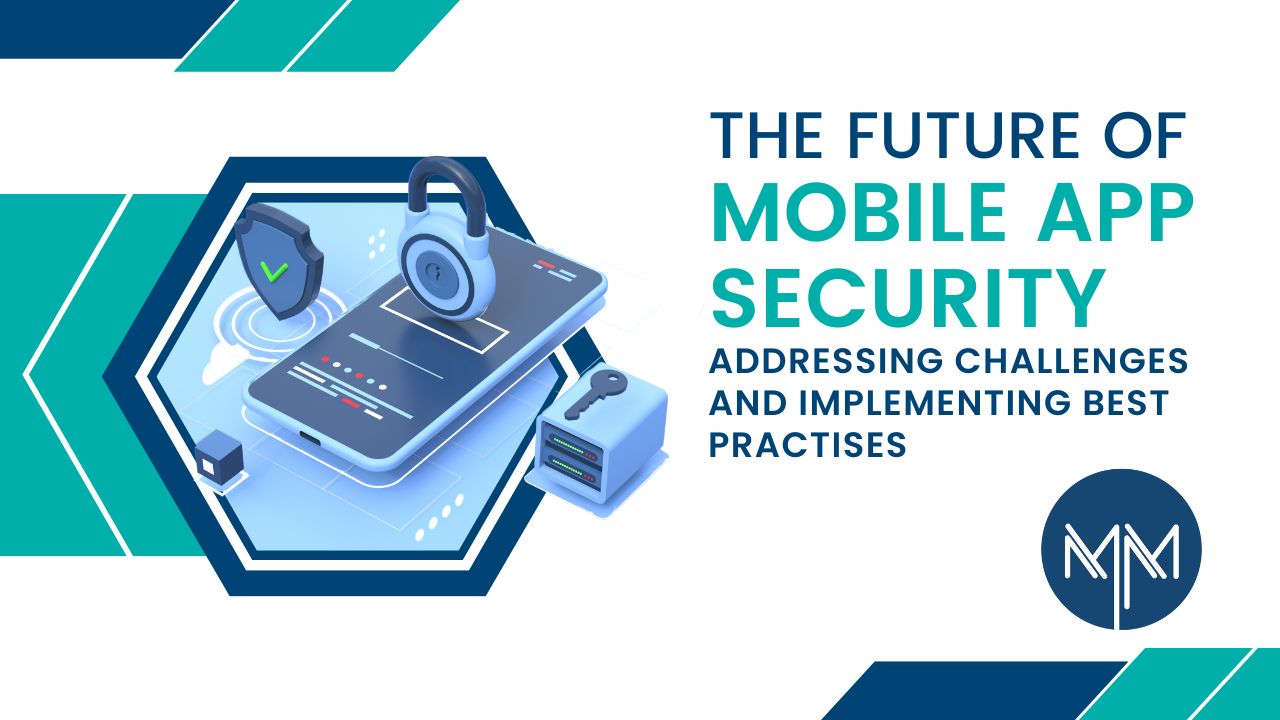Our day-to-day reliance on mobile applications for various aspects has grown over the past few years. With the ever-growing advancements in technology, new challenges and vulnerabilities have increased, demanding constant vigilance and the implementation of the best practices.
Recently mobile applications have become a significant part of the financial and banking sectors. There is a certain beach in the application that can lead to a huge amount of data theft, and numerous fraud cases.
With the help of this blog, we will explore the future of mobile application security, discuss the challenges that might create a huge problem, and propose effective solutions to safeguard user data as well as maintain app integrity.

An evolving mobile application landscape and potential threats-
According to various research and reports, mobile app security is getting more complex because of the rising threats. Hackers will create advanced methods to take advantage of security flaws, steal confidential information, and jeopardize user privacy. Furthermore, the development of Internet of Things (IoT) devices linked to mobile apps may increase the threats by introducing new attack avenues.
Some of the common challenges are:
Unsafe APIs: Many mobile apps rely heavily on APIs, and these components’ security weaknesses can disclose user information and provide third parties access to private features.
Diverse Devices: It is difficult to provide uniform security across a wide range of devices that use various OS versions and platforms.
Data breaches: Data leaks are the biggest worry for both consumers and developers of mobile apps. To get unauthorized access to user data and cause identity theft, financial loss, and reputational harm, attackers target lax security measures. Mobile applications frequently access private user information, such as identity information and location data. Severe privacy breaches may be caused by unauthorized access or data leaking as a result of shoddy coding techniques.
Weak encryption on both ends: During transactions of financial or personal data, both ends need to be encrypted in order to prevent data theft. When authentication and permission choices are made according to the contents of these inputs, hackers can get around the security.
Best practices to overcome the security risks
Developers and organizations must implement best practices that emphasize prevention, detection, and reaction in order to handle new problems and strengthen mobile app security. Here are some suggested best practices:
Protected coding: Building a solid mobile app requires using secure coding techniques. To avoid code injections, developers should follow standards, employ encryption methods, and sanitize inputs.
Updates on Security Frequently: Regular updates must be released by developers in order to quickly fix vulnerabilities. Users may be guaranteed to quickly install the most recent security fixes by using automated update prompts.
MFA, or multi-factor authentication: By leading users to submit several forms of identity before accessing sensitive information or doing important actions, MFA adds an extra layer of protection.
Safer APIs: Developers of mobile applications should extensively assess the security risks associated with third-party APIs and make sure that all communication with them is encrypted and authorized.
User Instruction: Users are essential to ensuring the security of an app. The possibility of security breaches may be reduced by educating users about possible hazards, such as sharing personal information or installing programs from unreliable sources.
App Hardening Techniques: Obfuscation and code minification are two examples of app hardening strategies that make it more difficult for attackers to reverse engineer apps, protecting sensitive data and intellectual property.
Encryption of data: Strong encryption techniques are used to store and transmit data, ensuring that even if data is intercepted, it cannot be decoded by unauthorized parties.
Self-Protection for Runtime Applications (RASP): RASP technology adds an extra line of defense against possible dangers by being able to recognize and stop assaults in real time.
These are some of the basic standards, which are required for the developer to comply with in order to ensure high security. However, the mobile application scenario is constantly changing, which requires additional implementation. Therefore, we are providing certain techniques that might become the Future of Mobile Application Security.
The changing factors:
Biometric verification: As technology develops, biometric authentication techniques like fingerprint scanning and face recognition will spread more widely, improving app security by enabling safe and practical user identification.
Behavioural Analytics: Mobile apps that use behavioral analytics can assist in spotting odd user behavior, identifying possible security issues, and adding an extra layer of security.
Integration of artificial intelligence (AI): AI-powered security solutions may assist in detecting and responding to new threats more quickly, keeping up with attackers, and better securing user data.
Using Blockchain to secure apps: Blockchain’s decentralized nature may be used to improve app security by maintaining data integrity, guarding against data manipulation, and preventing unauthorized access.
Create a safe updating system to quickly distribute security updates and fixes to users. Update the software often to correct flaws and guarantee that users are protected from known threats.

Conclusion
Mobile app security will face both difficulties and significant breakthroughs in the future. Developers need to prioritize secure coding practices, adopt innovative technologies, and often update their programs to fix any vulnerabilities if they want to stay ahead in this changing environment. By remaining educated and implementing proper security practices, users may play a significant part in protecting their data. We can make the digital world safer for everyone if we work together to improve mobile app security.
If you want to make secured mobile applications, you can consult with expert and talented mobile application developers at Matrix Media Solutions.


 January 02, 2024
January 02, 2024

